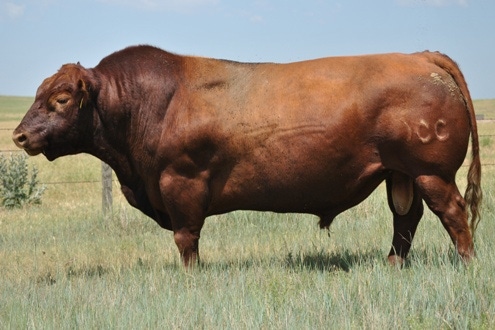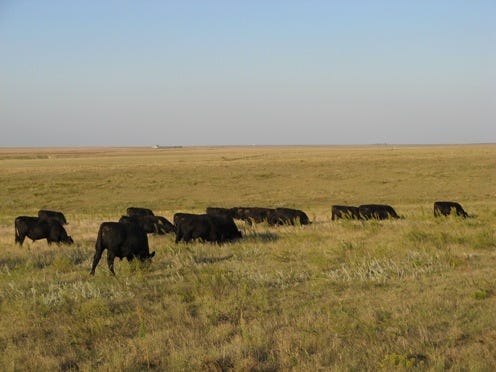April 26, 2013

Kit Pharo is known for saying, "As long as you are doing what everyone else is doing you will never be above average.”
The Cheyenne Wells, Colorado, seedstock producer also says his purpose in managing Pharo Cattle Company (PCC) is to be different for the right reasons.
These statements rang true in my experiences earlier this week as I attended the Pharo Cattle Company’s spring bull sale in Burlington, CO. There I watched 225 bulls, all developed without grain, sell for an average price of $4,277. These forage-developed “solar bulls,” as Pharo calls them, will then be shipped off to their new homes in 21 different states and two Canadian provinces over the next week.
I attended the sale with the intention of learning more about the philosophies that make PCC different from its industry counterparts. In addition, I was humbled to have the opportunity to talk with and ask questions of several progressive ranchers having success using low-input ranching philosophies in the management of their own operations.
The philosophies driving the breeding, selection, and development process behind this outfit’s cattle differ greatly from much of what I have seen and heard in the mainstream cattle industry today.

Grass only: Kit Pharo has been an industry leader in developing bulls on forage, calved later in the year than most and from cows that fit their environment.
Grass only: Kit Pharo has been an industry leader in developing bulls on forage, calved later in the year than most and from cows that fit their environment.
I asked Pharo what led to the development of these foundational philosophies in his program. He remarked it all began with the need for more profit-minded ranch management and gave credit to help he received from several low-input ranchers who served as a vital management advisory board to PCC during the late 1980s. With their support, Pharo has been able to go from selling only seven bulls in his first bull sale in 1990, to successfully marketing about 700 head of bulls annually.
He lists three key changes in ranch management he made that were essential to his ranch’s profitability over the years:
Proper grazing management – rotating pastures, significantly reducing harvested feed use.
Calving in sync with nature – switching from March calving to late-May through early-June calving.
Cow type – matching cows to the ranch’s forage resource base.
Pharo says he also puts a continual strong focus on reducing and eliminating the use of inputs such as supplemental, harvested feeds.
These management changes have led Pharo Cattle Company to become seedstock producers of a type of cattle that is smaller-framed, adaptable, hardy and efficient. They are able to survive on what the ranch provides while still producing a desirable end product on the rail.
While I understand PCC’s bulls will not fit every ranch, the proof in their performance and adaptability of these cattle is undeniable. I think their differences certainly set them apart from the rest in the industry.
In my humble opinion outside-the-box thinking or a “herd quitter” mentality as Pharo calls it, is a necessity for ranchers desiring to remain successful and profitable when dealing with the high-priced inputs and volatile economic climate of today and into the future.
Much like PCC, we must continue to challenge the preconceived notions of how things have always been done and maintain a profit-minded outlook when it comes to making critical management decisions on the ranch.
About the Author(s)
You May Also Like




